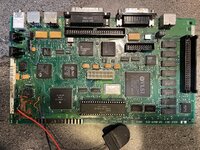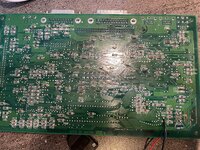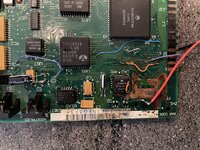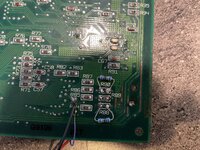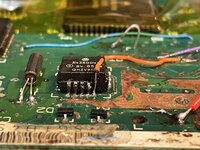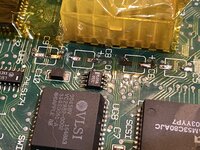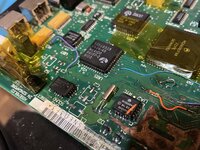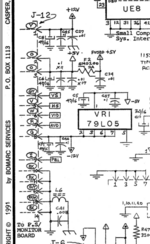Kouzui
Well-known member
I'm working on a Macintosh Classic which has unfortunately seen the bad side of a clock battery. The damage didn't seem to be too terrible to me, but I replaced all the caps on the logic board (have not touched the analog board, and don't intend to if I don't have to). I've also repaired a few traces that I could see were broken, as well as the two diodes near where the battery was. I removed the RTC and SND chips and dipped them in vinegar/alcohol as well. Unfortunately, one of the legs came off of the RTC chip, but I tried my best to make a makeshift wire connection to the trace with what remained.
However, when I plug in the logic board and try to turn it on, it fails to start. I've attached a video of what happens when I try.
What I was wondering is: Has anyone ever seen this before? is the board dead because of the missing RTC leg? (Can provide pics if you need them, the missing leg is the one closest to the battery corner of the board, on the side with the reset buttons).
I can't find any examples of this behavior online, and I'm basically just wondering if it means it is dead for good, or if I can keep working on it to bring it back to life.
View attachment IMG_8497.mov
I should note that, when I turn it on without the logic board, the fan runs consistently and there are no strange noises from the CRT or logic board.
However, when I plug in the logic board and try to turn it on, it fails to start. I've attached a video of what happens when I try.
What I was wondering is: Has anyone ever seen this before? is the board dead because of the missing RTC leg? (Can provide pics if you need them, the missing leg is the one closest to the battery corner of the board, on the side with the reset buttons).
I can't find any examples of this behavior online, and I'm basically just wondering if it means it is dead for good, or if I can keep working on it to bring it back to life.
View attachment IMG_8497.mov
I should note that, when I turn it on without the logic board, the fan runs consistently and there are no strange noises from the CRT or logic board.

